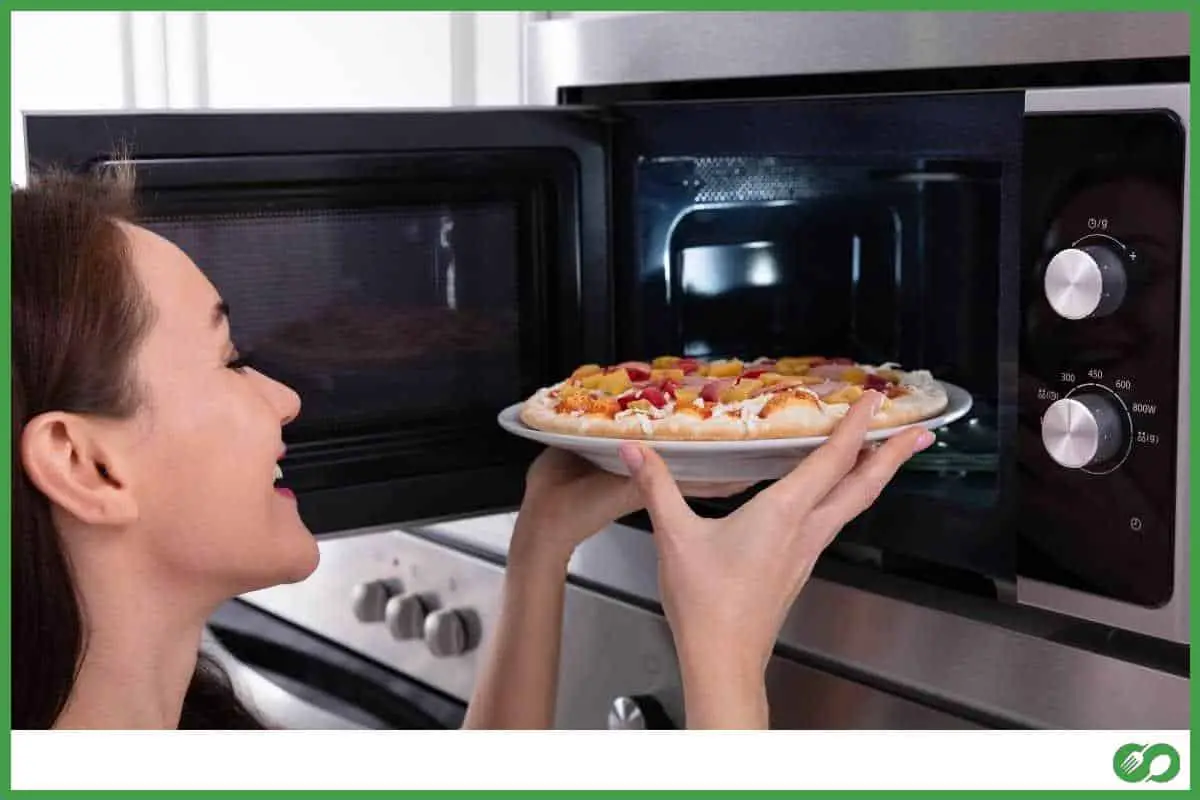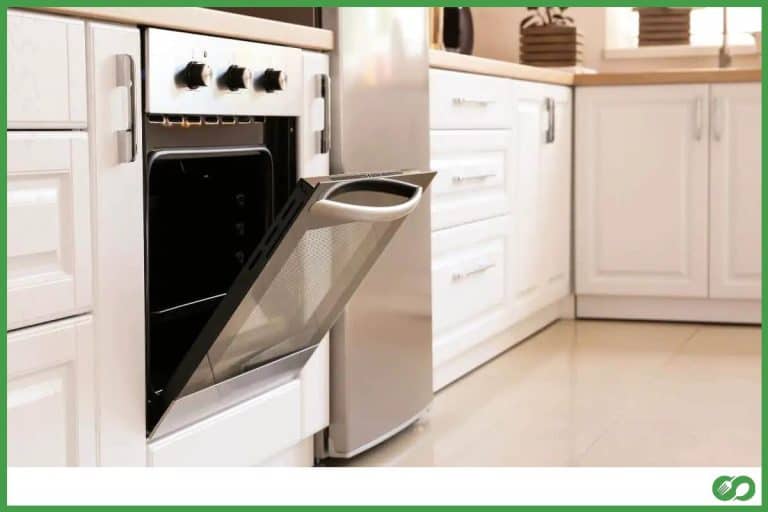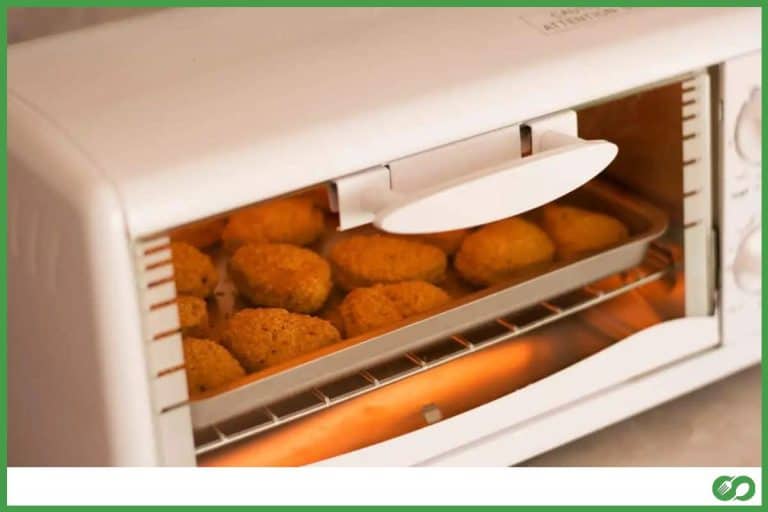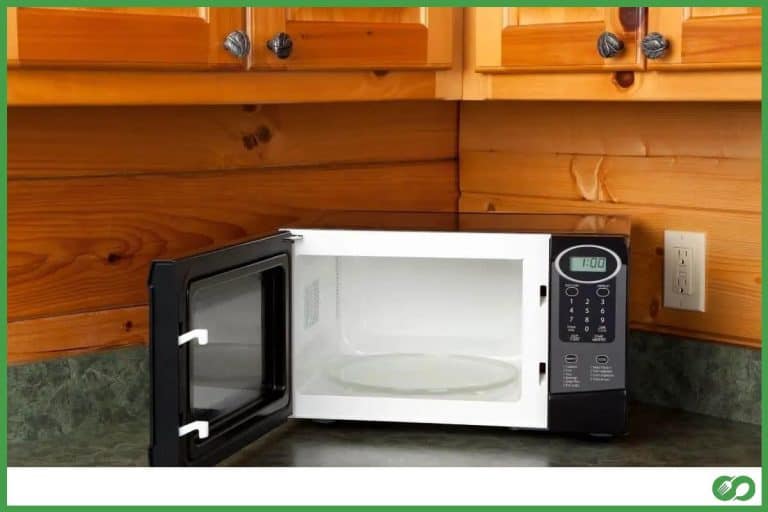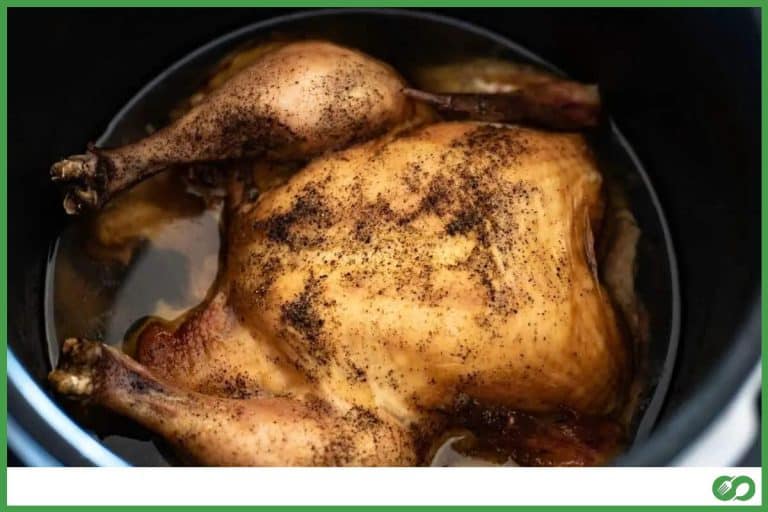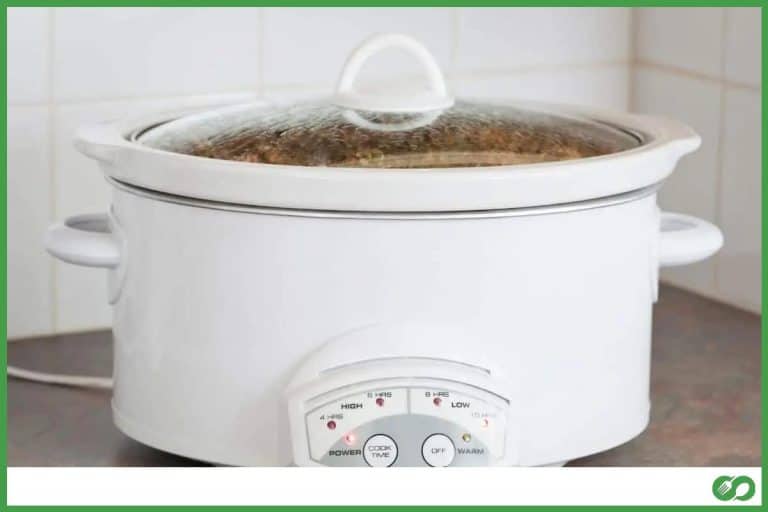What Materials Are Safe to Use in the Microwave? (And what to avoid)
This post may contain affiliate links which means that, if you choose to make a purchase, I may earn a small commission at no extra cost to you.
A microwave oven is one of the most convenient and useful kitchen appliances out there. However, no matter how convenient it is, the microwave is not able to withstand any material you put in it. For safety, it is important to know what materials are safe to use in the microwave.
Among the safest materials suitable for cooking in the microwave, we can find glass and ceramic ware. Paper plates, napkins, or towels are safe as well. Other materials such as oven cooking bags, parchment and wax paper, baskets made of wood, and straw are also suitable for cooking in the microwave.
However, there might be exceptions when even these materials might not be a safe choice. There are also certain materials you should avoid putting in a microwave. In the rest of the article, I will explain in detail which materials you can and cannot use. So, I advise that you keep on reading.
What Materials Can You Use in the Microwave Oven?
For people on the go, a microwave is a lifesaver. On busy days, preparing a meal can take so much time. With a microwave oven, it takes just a few minutes to warm up your meal all ready to eat. But just because it is convenient doesn’t mean you throw in any material in there.
Many are not aware, but there are very few materials that are safe for microwaving. It’s always recommended to check your microwave oven’s manual for the materials that you can use or the label of a container before you put it in the microwave. The materials that are safe to put in the microwave oven are:
Glass and Ceramic
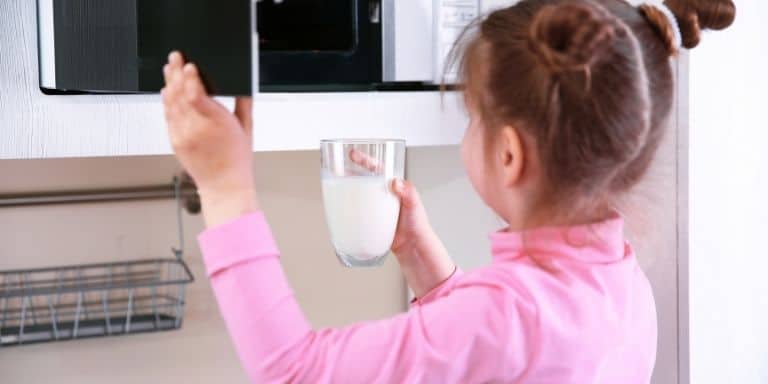
Usually, the safest material you can use in the microwave is glass and ceramics. Be it glass, plates, bowls, jars, mixing bowls, or bakeware, as long as it is a heat-resistant glass or ceramics dishware, it will be fine to put in a microwave. Dishes or containers made from glazed ceramics or china are safe for microwave use as well.
But you have to make sure there are no metallic parts or elements on there. Remember not to put in any cracked or chipped glass or ceramics dishware either.
Usually, glass jars are not heat-resistant. So when you put a glass jar in the microwave, always make sure to remove its lid. Do not overheat as the jar may break.
Paper
You can put in paper towels, parchment and wax paper, paper bowls, or paper plates with no problem. Paper towels are quite useful to cover food so it doesn’t spit any oil when you are cooking. But if the paper towel is recycled or has any printing on it, it can cause a potential safety hazard. So you should avoid using them.
Sometimes disposable paper plates will come coated with a thin layer of plastic. So it’s best to make sure there’s a label stating it’s safe for the microwave before putting it in. It’s not safe to use newspaper as it leaks ink into the food you might be cooking.
Make sure to never use typical paper bags used in grocery stores for microwaving popcorn. Not all paper bags are made equal and won’t come equipped with susceptors like popcorn bags. Typical paper bags can emit toxic fumes when heated and even catch fire. So it’s best to keep them away from a microwave oven.
Plastic

Almost all plastic Tupperware is safe to use in a microwave. But if an item is not marked “microwave-safe”, don’t put it in. Always make sure to check the label and warnings on an item before you place it in a microwave. The safest options are plastic containers that have a label clearly stating “microwave-safe”. Plastic containers made for longer use are also safe.
Avoid putting in any single-use containers with yogurt, margarine, or cottage cheese in the microwave. Melted or warped and pitted plastic containers are not a safe choice either. When you use plastic wrap to cover food, it should not touch the food.
Aluminum Foil
You can use aluminum foil only if you use it to shield your food. You can use small, smooth pieces of foil to cover up small pieces of poultry or meat to keep them from overheating. The foil should stay at least 2.5 cm away from oven walls to prevent any arcing.
If the aluminum foil is bent, crumpled, or in small pieces, never put it in the microwave. If you do, you are bound to experience some scary sparks and arcs.
What Materials Should You Avoid Using in the Microwave Oven?
Certain materials should never be placed in the microwave. Using the wrong material in the microwave can potentially ruin our food or even cause serious health issues. The materials you should avoid to cook in a microwave are:
Metal
It’s never a good idea to put metal in the microwave. You can do a quick search on Google or YouTube to find out that microwave and metal are a very bad combination. However, not all metal is bad and the shape and smoothness of the metal are all that matters.
You will see that microwavable pizzas come on a tray with metal lining. This is okay to put in the microwave as it can perfectly reflect all the microwaves into the pizza. But if any metal utensils or foil you plan to put in have curves or wrinkles on them, they will trap the microwaves. This causes them to build up and results in a spark.
If such sparks get in contact with anything flammable, you will experience a horrible fire. There’s no doubt we want to avoid such terrible situations. So, it’s best to be safe than sorry and avoid putting any metals in the microwave unless it’s labeled as microwave-friendly.
Brown Paper Bags, Printed or Recycled Paper Towels, Newspapers
Paper is usually okay as long as it is the right kind of paper. You can’t put food on newspapers or any other printed paper and heat them in a microwave. The ink from the paper can leach into your food and that is no longer safe for consumption.
Another misconception is mistaking brown paper bags for popcorn bags. The usual brown paper bags you use in the grocery stores are not microwavable. They cannot withstand much heat and might even catch fire when you microwave them. Besides that, it’s also a health hazard as it may contain germs and emit toxic fumes into your food.
Single-Use Plastic Containers
Plastic containers that come with butter, meringue, butter, and other food items are meant to be used only once. So they are usually made with cheap plastic or other materials not meant to withstand heat. So for obvious reasons, it’s not the best idea to put these in your microwave.
If you put your food in such containers to heat them in the microwave, you might find the containers badly melted. As if that’s not bad enough, they might even release harmful toxic chemicals into your food.
Metal Twist Ties
Metal twist ties are made from metal. As I have stated before, it’s a terrible decision to put metal in the microwave.
If you use metal twist ties to seal your food packets, make sure to take them off before putting them in the microwave. It can cause arcing or even a fire in the oven.
Melamine
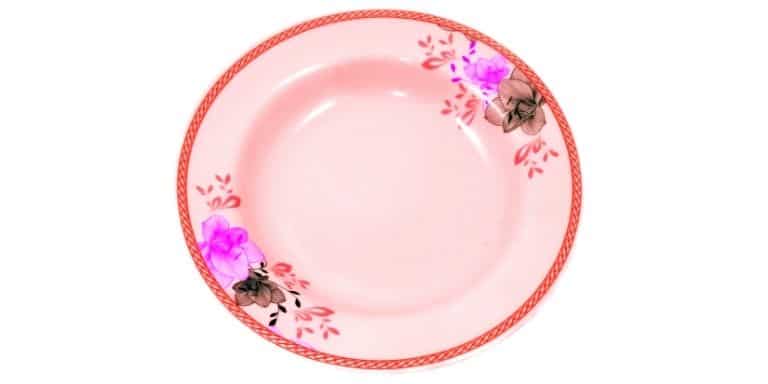
Melamine is a cheap, hard plastic used to make dishware. It has been around for decades yet most people can’t differentiate it from other plastic dishware. It even has a warning on the bottom but people fail to recognize the material.
Dishware made from this material is very attractive and only meant for displaying food. Putting it in the microwave is a bad idea. When you heat Melamine ware, it will crack. So it’s best to avoid putting it in the microwave.
Styrofoam
You can use Styrofoam containers to protect your food in the freezer or the refrigerator. But using them to heat food in the microwave is not recommended.
When you put plastic foam or Styrofoam in the microwave, it will melt from the heat and lose its shape. The issue is that the heat will melt the container and ruin your food. It may also release toxic fumes into your food making it unsafe for consumption.
Cardboard
Cardboard is usually harmless to your food, but not so much when you decide to heat them. Cardboards might contain waxes, glues, or other materials.
When you heat the cardboard container with your food, it might leak toxic fumes harmful to your health. Needless to say, you don’t want your food to become toxic as well. So remove food from the cardboard container before putting it in the oven.
Takeout Containers
If you are thinking about reheating last night’s takeout, make sure to remove it from the containers. Takeout containers usually have a thin metal handle and the microwave doesn’t work well with them. When you heat these containers you will experience the wiring catching sparks or even flames. Worst of all, the food may become inedible.
Remember to always check whether the container has the “Microwave-safe” label on it. If it doesn’t, take the leftovers out on a microwave-safe plate or container. Use a paper towel to cover the food to prevent popping or splatter and microwave with no problem.
How Should You Choose Microwave Safe Containers?
A few simple practices can make sure any container you put in the microwave is safe to use. For a healthy life, these can be extremely helpful. Let’s take a look at them:
- Run a Safety Test
A simple method can help you ensure whether a container is microwave-safe or not. If there is no label or you are unsure, this method can come in handy:
- Place the empty container in the microwave.
- Put another container with a cup of tap water inside the microwave.
- Heat them on high for a minute. If the empty container seems cold to the touch, it’s safe to use. If it is warm, it’s better to use it only for reheating food. But if it is hot, it is not safe to use in the microwave.
- Read the Microwave Manual
It is always handy to read the manual to avoid any potential dangers. You can find everything about the materials you should use and avoid.
- Follow the Instructions for Prepared Foods
Whenever you want to cook prepared foods in the microwave, the safest way is to follow the instructions on the packaging. Do not use the given container a second time.
Best Microwavable Food Containers
A good set of microwavable food containers can bring all the differences: you spend less time refrigerating servings pre-prepared, take leftovers at home or work, and reheat anytime to take healthy food whenever you want. What are some characteristics of good microwavable food containers? It should have an airtight seal, be leakproof, and of course, microwave-friendly.
If you don’t want to go through the trouble of searching for good microwavable food containers, I got your back. I have compiled a small list of 3 of the best microwavable food containers:
1. Rubbermaid Brilliance Food Storage
Not only are these containers suitable for freezer use, but they also work fantastic with a microwave as well.
It was extremely easy to use these containers as it is made from a clear material named “Tritan” so you can easily see what you put in there. The containers are easily stackable, have an airtight seal, and are guaranteed leakproof.
Specifications:
Dimensions: 8.25 x 5.5 x 6.56 inches
Color: Clear
Material: Plastic
Size: 9 Piece set
Features:
Crystal-Clear Design: For a premium and beautiful look, each container is made of crystal-clear material named “Tritan”. So you can see whatever food you are storing.
Leak-Proof: It is leak-proof to provide you a spill-free, mess-free time in the kitchen or wherever you wish to have your meal. The 2-latch design gives you a secure and airtight seal to keep all your food fresh.
Microwave Splatter-Free: When you microwave your food, simply living up the latches to open up the vents. There will be no splatters without removing the lid.
Pros
- It is safe to use in the freezer, microwave, and dishwasher.
- You can easily stack them.
- Odorless and stainless containers.
- Transparent and easy-to-use.
Cons
- The lids may be a bit difficult to store.
- The size may be smaller than expectations.
2. Rubbermaid Easy Find Vented Lids Food Storage
If you are looking for some great containers at a low price, this might be the best choice. You get 42 pieces of containers in one set and a huge variety of sizes.
The best part is that one lid can fit perfectly with multiple containers so that you don’t waste time trying to match the right lid. It’s easy to store them as well as the lids can snap close to the bottom of a container.
Specifications:
Dimensions: 12.63 x 12.5 x 7 inches
Color: Racer Red
Material: Plastic
Size: 42 Pieces
Features
Easy to Store: Since the lids can easily snap to the bottom, it’s easy to store them and keep them organized.
Built-in Vents: There are built-in vents to reduce all the unwanted splatters and pops when you microwave.
Works as meal prepped containers: Sturdy containers and can be used for meal prep, reheating, storing, leftovers, and others.
Pros
- You get a variety of containers in different sizes.
- You get many containers and great value.
- A lid can fit several containers.
Cons
- May get damaged in the microwave sometimes.
- The containers take too long to dry.
3. Pyrex Simply Store Glass Food Storage
This is one of the best glass food containers you will find. You can store a variety of things in them, they stack very nicely and you can take them on the go.
Thanks to their straight edges, they take very minimal space. Another great feature is that the lids are very slim and I find it easy to store.
Specifications:
Dimensions: 15 x 10.25 x 6.63 inches
Color: Multicolor
Material: Glass
Size: 18 Pieces
Features:
Stain and Odor resistant: The containers won’t get any stain, smell, or odor thanks to the high-quality non-porous glass.
Oven-Proof Glass Containers: With a tempered glass base, the containers can withstand any temperature in the microwave oven.
BPA-free lids: All the lids are made from BPA-free plastic. They are a perfect fit for the containers and work in a freezer, microwave, and top-rack of a dishwasher.
Pros
- Safe to use in a freezer, dishwasher, microwave, and preheated oven.
- There are many sizes to serve various purposes.
- The nonporous glass keeps your food fresh and odorless.
Cons
- After many uses, the lids may get cracks.
- Very easy to clean.

